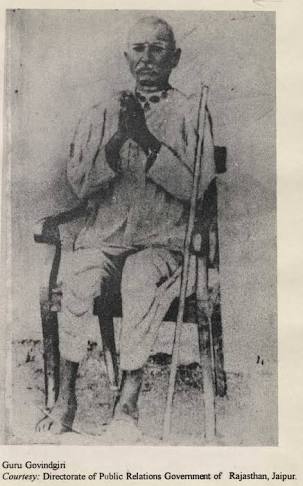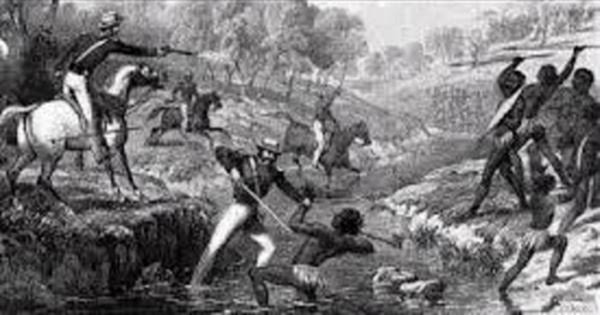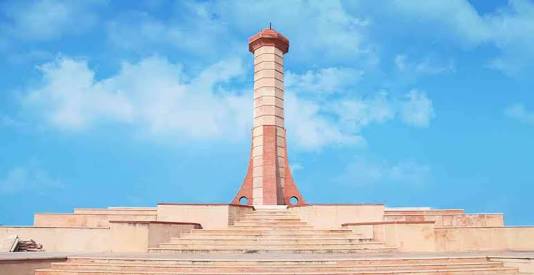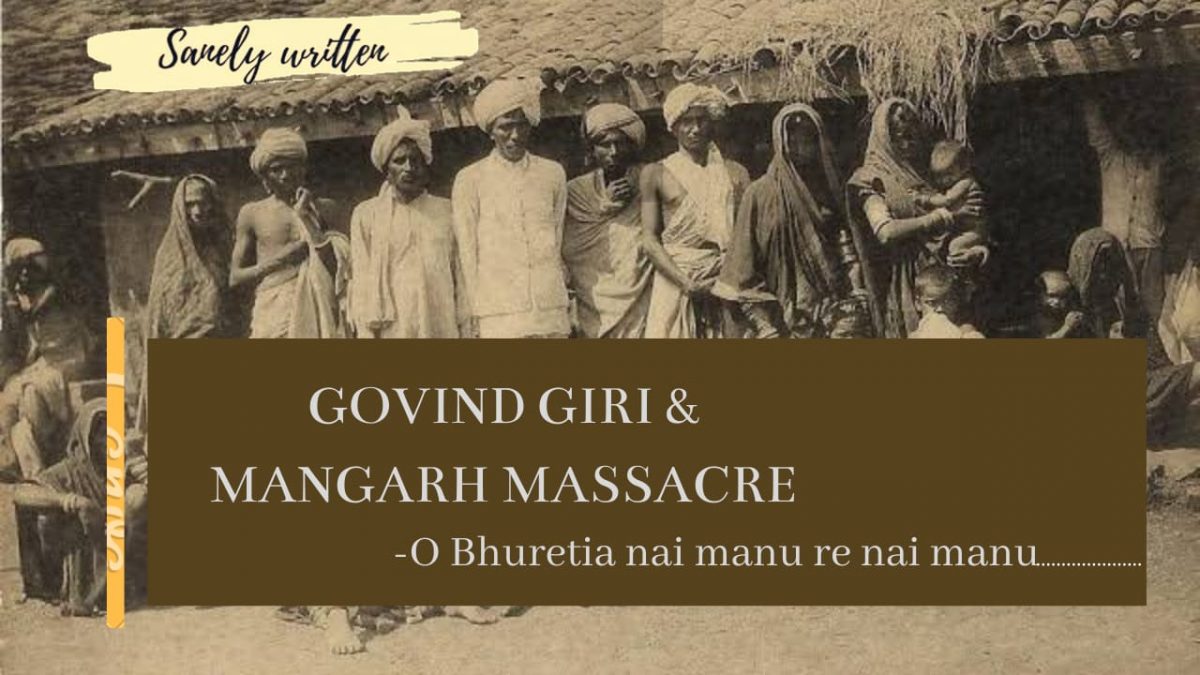We have talked about massacres brutal than the Jallianwala Bagh. Some were even tried to be suppressed by the British and even the Indians. Let us wrap up the Independence Series with another massacre which was arguably the most brutal of them all. A movement which was an outcome of natural calamities, caste indifferences and constant annihilation. A movement led by a labourer who turned into a man who fought for the injustice faced by the Bhil tribal community, Govind Giri, or as people used to address him, Govind Guru.

Govind Giri was born in 1874 in a banjara family near Durgapur, Rajasthan. He served as a bonded labourer in the princely state of Santrampur but started working with the Bhil community later. It was during this time when the great famine of 1899-1900 hit. Govind Giri reportedly lost his wife and child to the famine. The tribals were affected the most. The native rulers offered no assistance and different unjust rules made by the British had made things even worse. Those were testing times. Guru, having seen the plight of his people, decided to work for them and launched a movement called Bhagat movement in the 19th century. The basic aim of the movement was to give the Bhils the same legal, social and political rights as the others. The movement also propagated adherence to vegetarianism and also abstinence from all kinds of intoxicants. He really believed that it was the root cause of all kinds of sufferings along with a poor socio-economic setup. Guru in his speeches often used to criticize the rulers of the states more than the British because the tribal Bhil people have been tormented by the rulers since ages. He used to say that the Hindus, Muslims have forsaken their religion. The Hindus have become atheist and the muslims force them to eat beef and destroy their religion. The Rajputs force them to eat flesh and drink. They are so cruel that they kill their daughters so that they may not have to give them away in marriage. They also beat the Bhil people without even enquiring about the right or wrong. They do not allow their widows to re-marry and if a Rajput girl is widowed in an early age then she must remain widow all her life. He said that the muslims take interest on money and eat boar’s flesh which is prohibited in their religion.
On November 13, 1913, Govind Guru organized a mass gathering at Mangarh, which was situated in the dense forests on the borders of Banswara and Santrampur state. A religious fair was organized but someone spread the rumour that it was an agitation against the native states to throw them out of power and establish a Bhil estate. The rulers turned their heads towards the British for assistance. R.E. Hamilton, the political representative of the region decided to take some action against them and combined forces of the states and the British corps surrounded the hills where the people had gathered. The commanding officers were Colonel Sherton along with Major S. Bailey and Captain E. Stiley. They surrounded the hills, machine guns and artilleries were deployed. When the British negotiators were unable to convince the people, they ordered for an open fire. The guns and artilleries were let loose. Even automatic machine guns loaded on mules and donkeys were used to increase the damage to the crowd. More than 1500 were killed on that day including Chakha, one of the members of the Bhil community who had warned rulers of Banswara and Durgapur to address the grievances of the Bhil people or else witness a gathering aimed at overthrowing state authority for their constant suppression and tyranny.

Govind Giri and several others were arrested and were sentenced to life imprisonment. He was later released in 1919 for his popularity and good conduct but was banned to enter in any of the states where he had any kind of following. He then settled down in Kamboi near Limbdi in Gujarat where he died in 1931. His aide Punja Dhirji was dispatched to the Andaman jail for life imprisonment and he died after many years of serving out his sentence.

Descendents of both, the survivors and the victims of the massacre narrate stories about the genocide that their ancestors went through. Magan Hira Parghi, 75, of village Amalia says that his grandfather often used to narrate him those stories about how on failing to negotiate with the farmers, the British brought hell upon them with constant firing which was halted only after a British officer saw a child trying to suckle his dead mother. Lalshankar Parghi, a Bhil farmer has been collecting evidence from all over the place going from village to village. Guru had formed a Samph Sabha to unite people and strengthen his Bhagat movement and Lalshankar had lost his Grandfather Tiha who was a close aide of Guru and a member of the Samph Sabha. Tiha’s body was brought by six survivors and was cremated in an adjoining forest where Lalshankar’s father Pongar later build a memorial and named it ‘Jagmandir Sat Ka Chopda’ (Jagmandir, the place of true History). Matha Jithra Garasia , 69, lost his Grandfather and aunt in the massacre said that the incident had caused so much fear and anguish that the Bhils used to be scared of going back to Mangarh for several decades. Sakjibhai Damor, of Garadu village lost his uncle for over a decade. He also recalled that his father used to recite him Bhil songs of defiance which went : “O Bhuretia nai manu re, nai manu” ( O’ Britishers, we won’t bow before thee).
There were much more public genocide that the British had committed but sadly, we either have not heard of it or they are erased out from our history books. More than the British, it was the native Indian rulers who were the prime culprit of such killings of innocent people who just for the sake of their pleasure and convenience and to please the British had no shame in committing such atrocious crime. As Arun Vaghela, a historian of the Gujarat University said that the Government should sanction funds for the extensive research not only on Mangarh but also on many such suppression of public uprising against injustice and tyranny. There have been more Jallianwala Baghs in India.
Reference/s:
● Journal of Contemporary Asia
● Dictionary of martyrs of the freedom struggle of India
● Mangarh massacre (Click here)
● Descendents of Mangarh seek recognition (Click here)




3 replies on “Mangarh Massacre”
This Independence series was one of the best I have witnessed .??
Way forward for you Sanely written.
Keep doing this amazing work.
Hope you guys reach new heights.
Independence series is a gem
Didn’t know about this, nice content
Keep it up